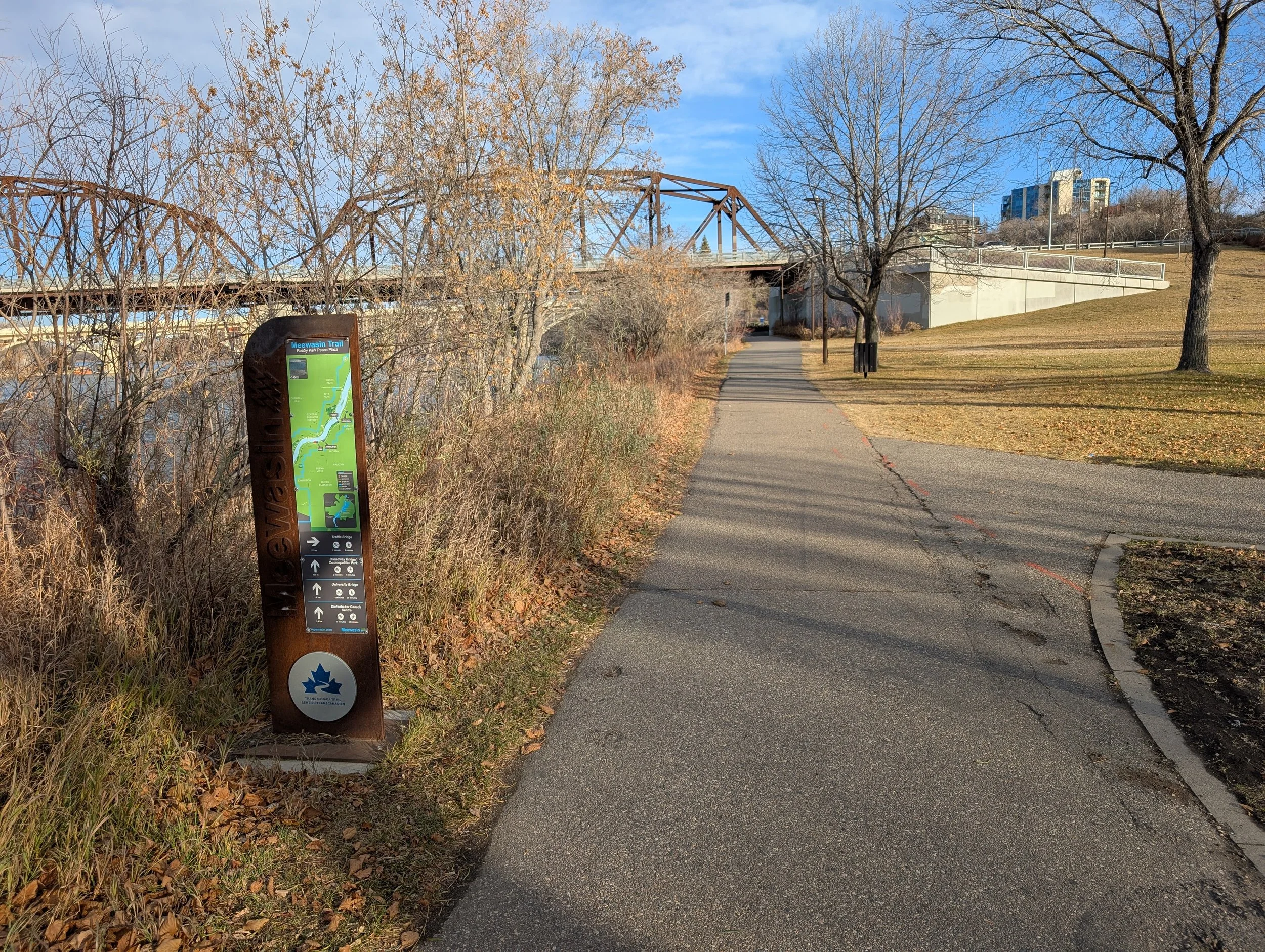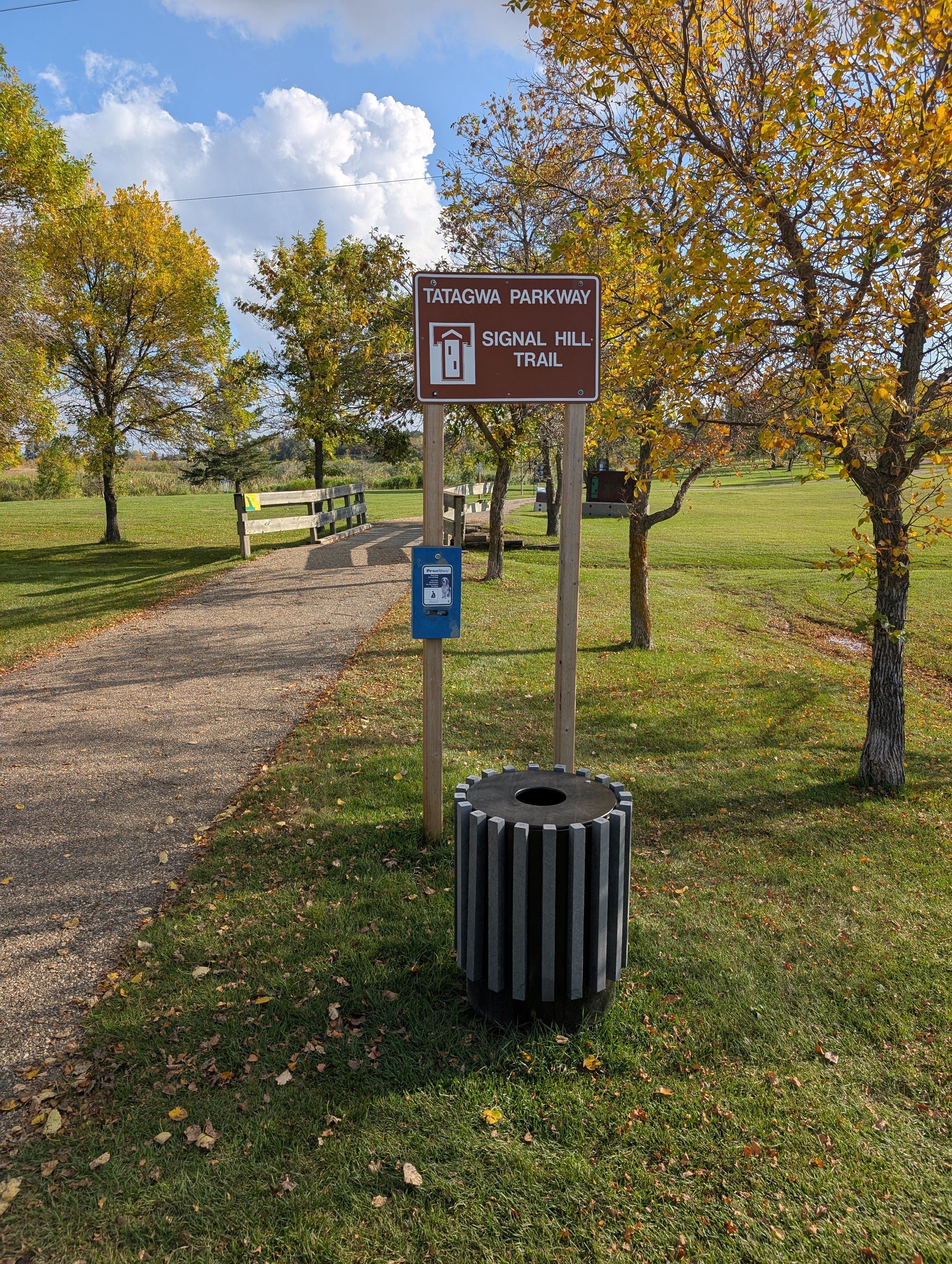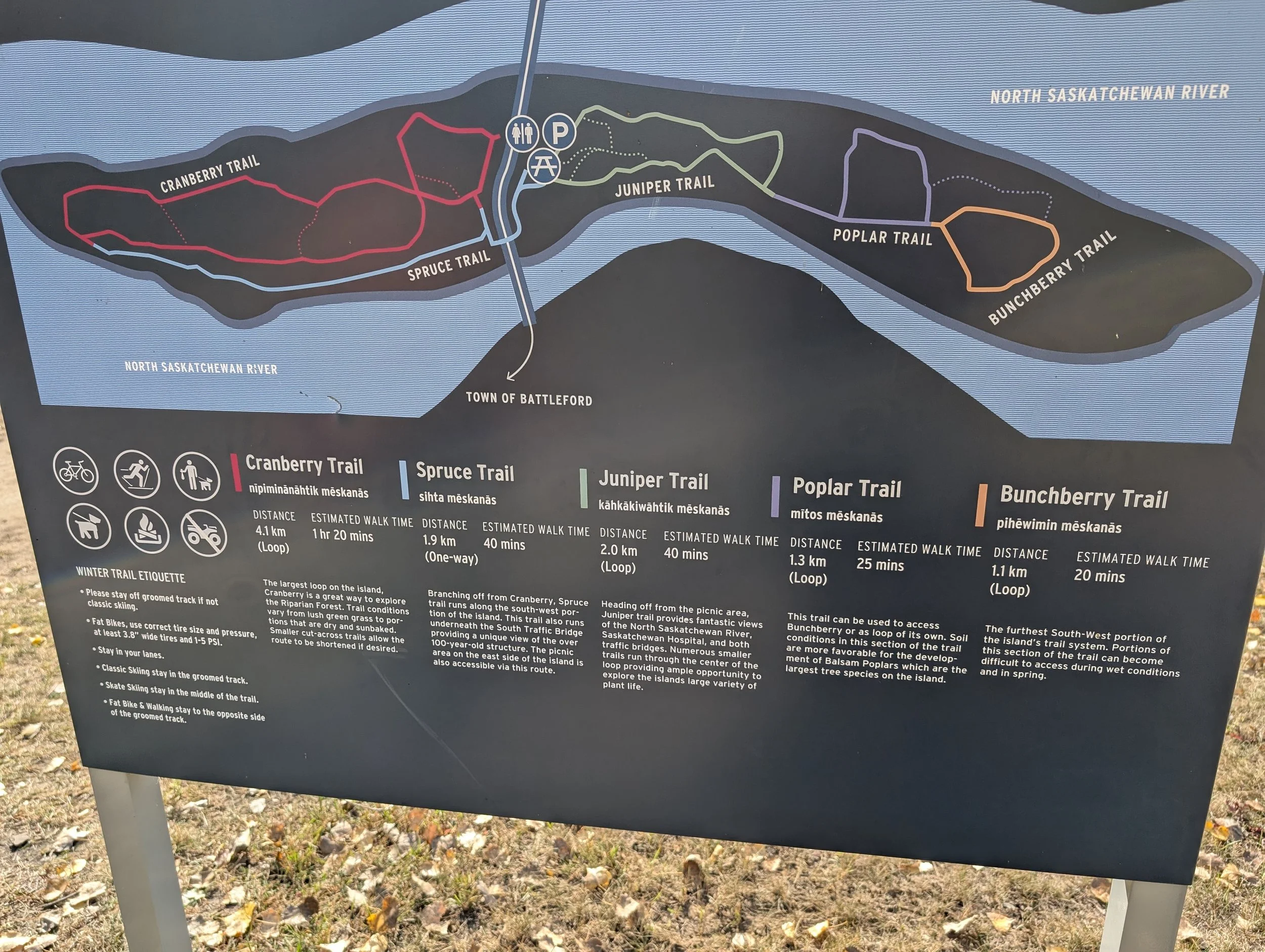Trail Building
JUMP TO:
MORE DEVELOPMENT SECTIONS:
TRAIL BUILDING
Best Practices & Helpful Resources
Conservation areas and urban parks, no matter where they are located, generally rely on a trail network for recreation and travel throughout the park. Whether you’re out for a rugged hike, or casually exploring the community’s green spaces, good trails are the backbone of outdoor recreation.
Trails can be built for connections between parks and neighbourhoods, or for access to picnic areas and playgrounds, or for cross country skiing, mountain biking and hiking, or just for exploring your urban green spaces.
Each trail type has different development and maintenance needs, and there are best practices you can use to successfully develop each.
Many of the following tips for building great trails are from Meewasin Valley Authority, the ASUPCA member with vast experience building trail networks for different uses and terrains.
The Saskatchewan Trail Association, and Trans Canada Trails are both great resources to help you develop your own trail network.
Trail networks benefit from well established guidelines for construction based on usage, location, and accessibility requirements. Guidelines provide consistency for users and for developers.
Consider the following when developing a guiding document for your trails:
Meewasin Valley Trail Rotary Park, Saskatoon
Meewasin Valley Trail, Gabriel Dumont Park, Saskatoon
Surfaces & Widths
The amount and type of traffic you expect for your trail should inform the width of the trail, as well as the surface type. Multi-use and high use trails should be wide enough to accommodate cyclists, and grades are important considerations for persons with reduced mobility.
Paved trails are best for accessibility.
Crusher dust and mowed trails might be best for more rugged trails where the biggest concern is keeping users on official paths.
Gabriel Dumont Park, Meewasin Valley, Saskatoon
Battleford River Valley Pee Gee Man Trail, North Battleford
Sightlines
Trails through conservation areas and parks should be engaging, and allow users to experience the park as fully as possible. Trail design should take advantage of interesting sightlines, look out points, views, and interesting landscapes. Trails should be designed to curve and provide points of discovery and interest.
Tatagwa Parkway Trail, Weyburn
Kiwanis Memorial Park, Meewasin Valley, Saskatoon
Amenities & Access
Trails should be built to accommodate as many user abilities as possible. Some park areas might be more suitable for different amenities than others, but consider resting points, restrooms, covered areas for inclement weather, points for refuse containers, and information signage.
More rugged trails may have fewer stopping points and refuse containers; high traffic and accessible trails more frequent rest stops and picnic areas nearby.
Signage
Information and regulatory signs are necessary for user safety, and should be accessible to a wide range of users. Provide information on trail difficulty, length, maps, restrictions on use, and points of contact between pedestrian and motorized vehicle traffic. Signs should also indicate if a trail surface changes ahead to warn users well in advance. Trails need signs that clearly indicate how to stay safe while out on the trails.
Wakamow Valley Wayfinding Sign
Battleford River Valley Cross Country Ski Trails Map
Little Red River Park Warning Sign
Little Red River Park Multi-Use Trail, Prince Albert
Corridors
Your trail corridor is the trail and the landscape through which it travels.
An interesting trail corridor has proximity to vegetation where users can interact with nature, both plant and animal, but does not allow vegetation to impede passage. Be mindful of vegetation overhang in the trail corridor, as well as vegetation that could grow over the trail itself.
These are areas of ongoing maintenance to ensure the safety and comfort of visitors, especially cyclists. Clearance around curves should be increased to reduce blind spots and trails should be kept clear in locations with reduced visibility.
Buffers
Whether for the safety of trail users along roadways or waterways, or for the protection of ecologically sensitive areas from the impact of users, appropriate buffers can create a deterrent without affecting landscaping or sightlines. Low posts, large stones, even vegetation beds that provide obvious separation can discourage users from leaving the path.
Battleford River Valley Parking Lot Buffer
Wakamow Valley Park Buffer Fence
Little Red River Park Amenity Buffer
These are just a few of the trail guidelines to consider as you plan your trail network. You may wish to consider maintenance, snow removal, trail comfort in summer, wind breaks, and how to manage slopes and erosion as part of your trails as well. Consider hiring a consultant to help you develop a trail development guideline document of your own.

CHECKLIST ITEM
Consider developing a trail development guideline for your community. It can help with consistency, safety, and budgeting.
Covered Picnic Area, Tatagwa Parkway, Weyburn


















